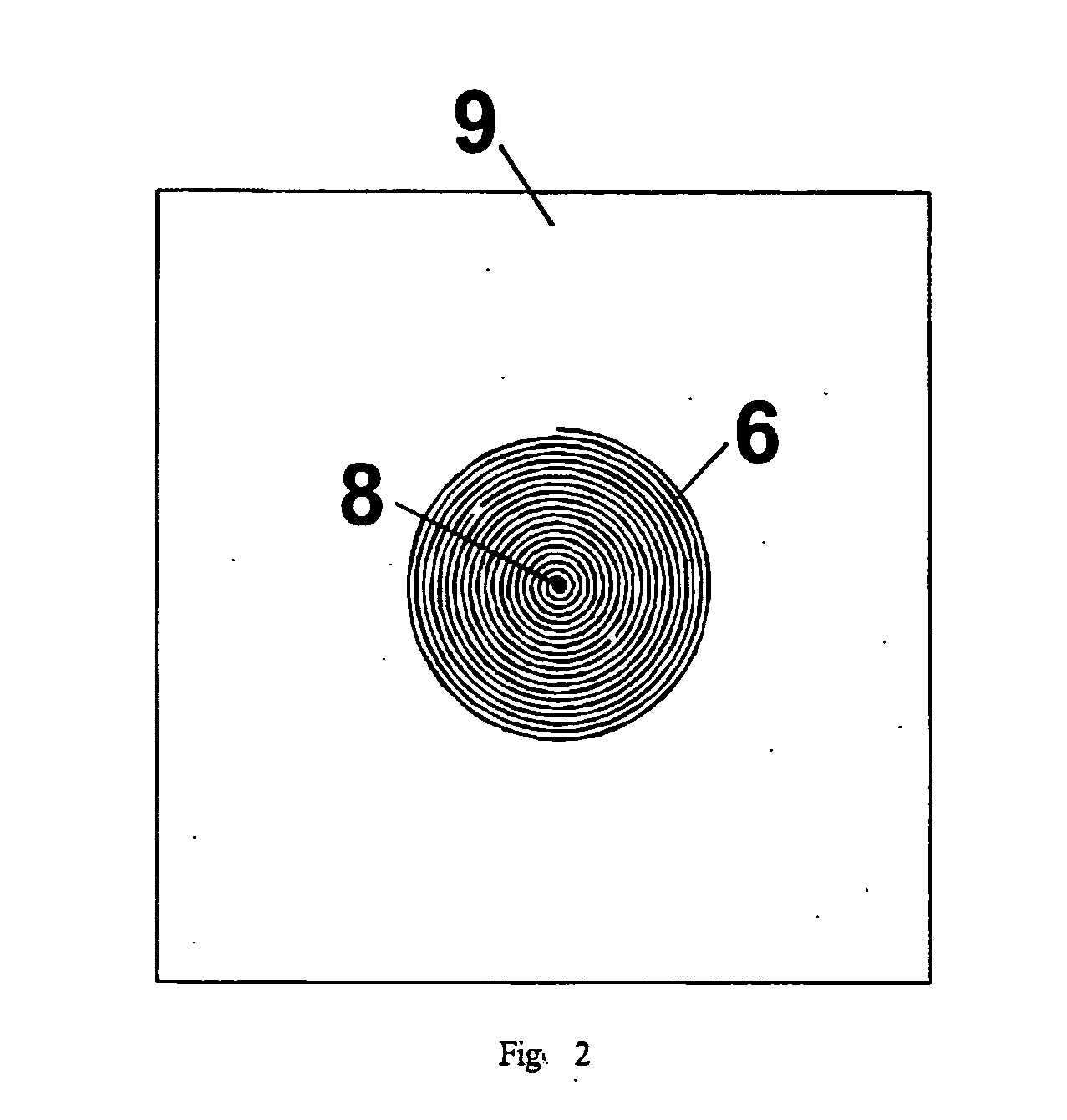Antenna element and array antenna
- Summary
- Abstract
- Description
- Claims
- Application Information
AI Technical Summary
Benefits of technology
Problems solved by technology
Method used
Image
Examples
Embodiment Construction
[0032]FIG. 1A is a schematic cross sectional view of the antenna element, viewed from the side. A metallic centre conductor 1 is arranged to pass a signal from a connection point 18 to an excitation element 6. The centre conductor 1 extends in an axially centred manner through a cylindrical transmission line jacket 2 and through an aperture in a ground plane 3. The centre conductor 1 extends further in an axially centred manner through a cylindrical excitation sleeve 5. The section of the centre conductor 1 that extends through the excitation sleeve5 advantageously comprises an impedance matching element 11 for matching the high impedance in the antenna to a standard 50Ω system which will be connected to the connection point 18. The impedance matching element 11 may be implemented as a cylinder of a dielectric with a high dielectric constant, which encloses the centre conductor 1, and which is further enclosed by the excitation sleeve. Alternatively, the impedance matching may be im...
PUM
 Login to View More
Login to View More Abstract
Description
Claims
Application Information
 Login to View More
Login to View More - R&D
- Intellectual Property
- Life Sciences
- Materials
- Tech Scout
- Unparalleled Data Quality
- Higher Quality Content
- 60% Fewer Hallucinations
Browse by: Latest US Patents, China's latest patents, Technical Efficacy Thesaurus, Application Domain, Technology Topic, Popular Technical Reports.
© 2025 PatSnap. All rights reserved.Legal|Privacy policy|Modern Slavery Act Transparency Statement|Sitemap|About US| Contact US: help@patsnap.com



